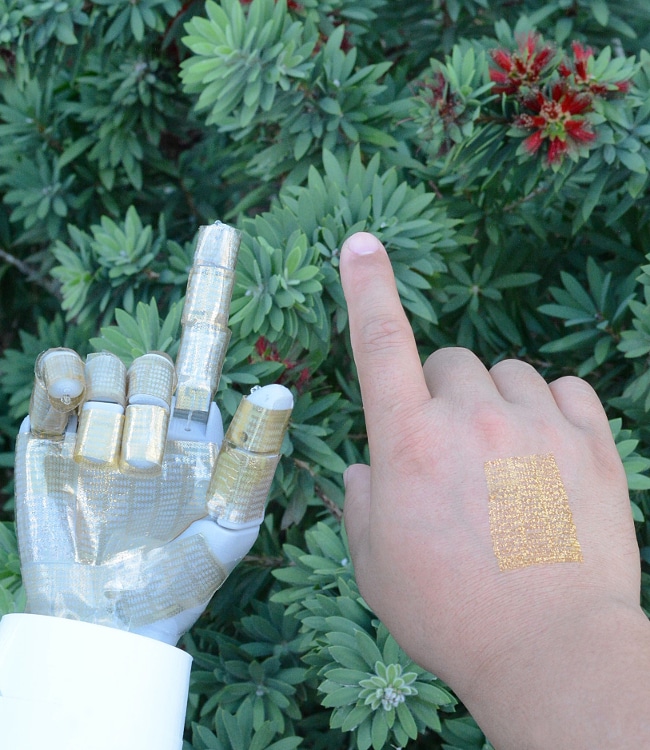Aug 5 2019
Wearable human-machine interfaces—devices that can gather and store key health information regarding the wearer, apart from other uses—have enjoyed the advances in materials, electronics, and mechanical designs.
 Cunjiang Yu, Bill D. Cook Associate Professor of Mechanical Engineering at UH, led a project to develop a multifunctional, ultra-thin wearable human-machine interface. (Image credit: University of Houston)
Cunjiang Yu, Bill D. Cook Associate Professor of Mechanical Engineering at UH, led a project to develop a multifunctional, ultra-thin wearable human-machine interface. (Image credit: University of Houston)
However, existing models can still be uncomfortable and bulky, and they cannot always manage multiple functions simultaneously.
On Friday, August 2nd, 2019, scientists published the discovery of a multifunctional ultra-thin wearable electronic device that is barely discernible to the wearer.
The device enables the wearer to move effortlessly and is less perceptible in comparison with wearing a Band-Aid, stated Cunjiang Yu, Bill D. Cook Associate Professor of Mechanical Engineering at the University of Houston and lead author for the paper, which appeared as the cover story in Science Advances.
Everything is very thin, just a few microns thick. You will not be able to feel it.
Cunjiang Yu, Principal Investigator, Texas Center for Superconductivity, University of Houston
It has the ability to function as a prosthetic skin for a robotic hand or other robotic devices, with a robust human-machine interface that enables it to automatically gather information and relay it back to the wearer.
That finds applications in health care—“What if when you shook hands with a robotic hand, it was able to instantly deduce physical condition?” Yu asked—as well as for circumstances like chemical spills, which are hazardous for humans but need human decision-making based on physical inspection.
Although the present devices are becoming popular, the scientists stated that they could be large to wear, provide slow response times, and experience a decline in performance eventually. Versions that are more flexible are not able to offer multiple functions simultaneously—for instance, switching, sensing, data storage, and stimulation—and are usually expensive and difficult to produce.
The device reported in the study—a metal-oxide semiconductor on a polymer base—provides manufacturing benefits and can be processed at temperatures below 300 ○C.
“We report an ultrathin, mechanically imperceptible, and stretchable (human-machine interface) HMI device, which is worn on human skin to capture multiple physical data and also on a robot to offer intelligent feedback, forming a closed-loop HMI,” the researchers reported. “The multifunctional soft stretchy HMI device is based on a one-step formed, sol-gel-on-polymer-processed indium zinc oxide semiconductor nanomembrane electronics.”
Apart from Yu, co-authors of the paper include first author Kyoseung Sim, Zhoulyu Rao, Faheem Ershad, Jianming Lei, Anish Thukral, and Jie Chen, all of UH; Zhanan Zou and Jianliang Xiao, both of the University of Colorado; and Qing-An Huang of Southeast University in Nanjing, China.
Soft Wearable Multifunctional Human-Machine Interfaces (HMIs)
(Video credit: University of Houston)